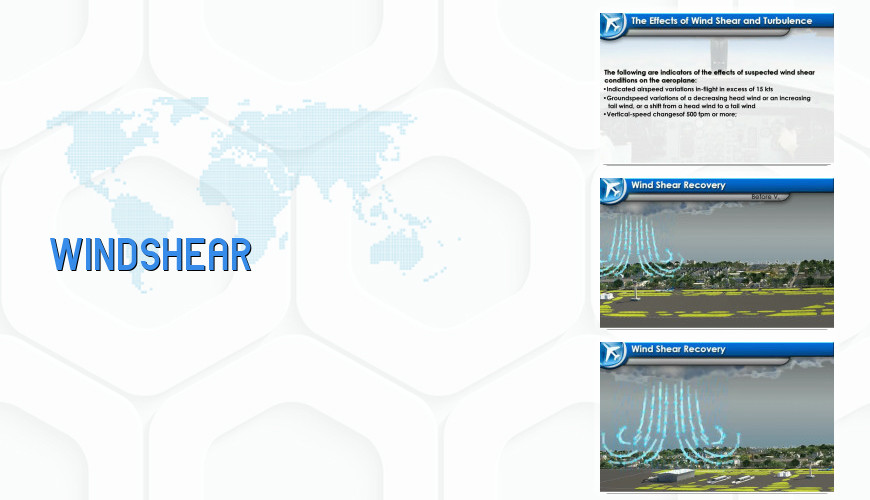
Course Information
This course is an excellent program on the threats of wind shear and turbulence in normal flight operations. This program meets all the requirements for all civil aviation agencies. The course contains the following information: A review of definitions of atmospheric conditions that contribute to wind shear and turbulence. A discussion of Clear Air Turbulence, Microbursts, Gust Fronts, and Terrain-Induced wind shear. Discussions on alerting systems such as Light Detection and Ranging (LIDAR) systems, Low-Level Wind Shear Alerting System (LLWAS), Terminal Doppler Weather Radar (TDWR) and the Microburst Alert (MBA) system. The effects of thunderstorms such as gust fronts and low-level turbulence. A very good review of some of the challenges of flight operations near airports.
Content of the Course
| Slide | 42 | Duration | 00:20:00 | Exam | No |
|---|
- COURSE START
- DEFINITIONS
- Clear Air Turbulence (CAT)
- Gust Front
- LIght Detection and Ranging (LIDAR) system
- Low-level jet
- Low Level Turbulence
- Low Level Wind Shear Alert System (LLWAS)
- Microburst
- Microburst Alert (MBA)
- Sea Breeze
- Terminal Doppler Weather Radar (TDWR)
- Terrain-Induced Wind Shear
- Turbulence
- Wind Shear Alert (WSA)
- Wind Shear and Turbulence Warning System (WTWS)
- CAUSE FACTORS
- THE EFFECTS OF WIND SHEAR AND TURBULENCE
- LOW LEVEL WIND SHEAR ALERTING SYSTEMS
- WIND SHEAR RECOGNITION AND AVOIDANCE
- Wind Shear on Takeoff and Initial Climb
- Avoidance before Departure
- Wind Shear on the Approach and Landing
- Wind Shear Descent Briefing
- WIND SHEAR RECOVERY
- Recovery during an Approach and Landing
- REPORTING PROCEDURE
- SUMMARY
- COURSE END

